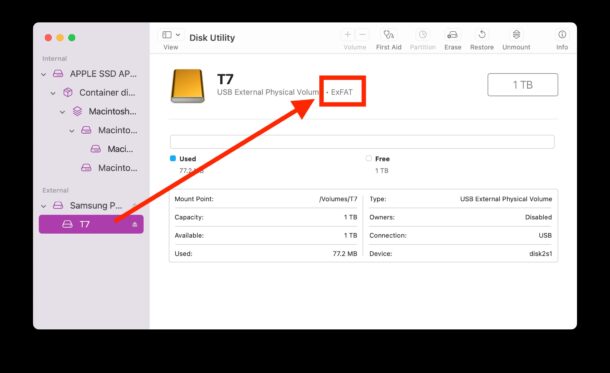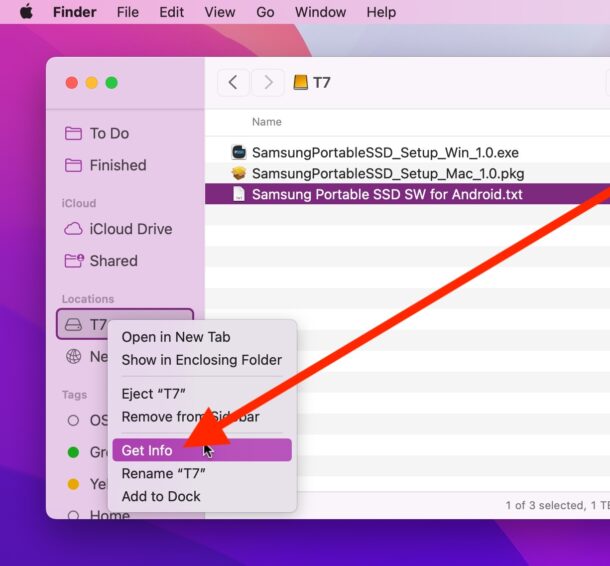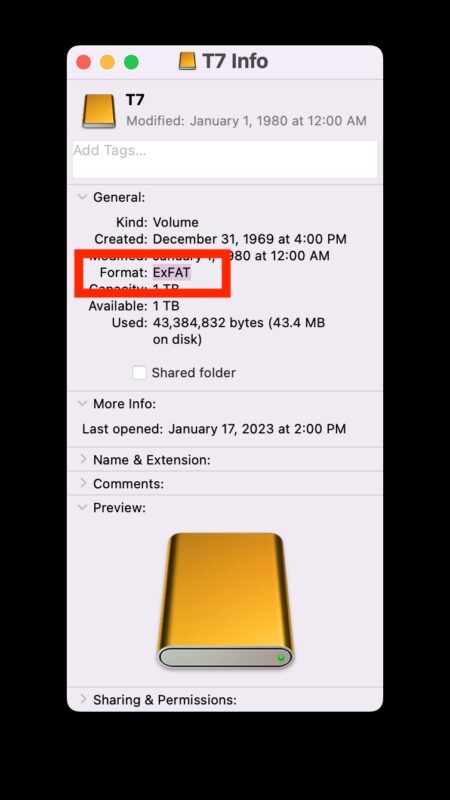How to Determine File System of a Drive on Mac - OSXDaily
![]()
You may find yourself needing to determine the file system type of a drive connected to a Mac, whether it's an external hard drive, a USB flash drive, external SSD or HDD, an SD card, or similar. File system types are important because they can help to determine if a drive is fully Mac compatible with a native file system, or if a drive or disk can be read by both Windows and Mac, amongst many other situations. Examples of file systems you may encounter include FAT, FAT32, exFAT, NTFS, APFS, Ext, Ext2, Ext3, Ext4, JFS, ReiserFS, XFS, and HFS+.
So, how do you determine what the file system is of a drive connected to a Mac? That's what we'll show you how to do, using two different methods; with Disk Utility, and with the Finder.
How to Determine File System of Any Disk, Drive, or Volume on Mac with Disk Utility
Disk Utility allows you to easily see the file system format of a drive or disk connected to a Mac.
Simply connect the drive, disk, flash key, or otherwise to the Mac, then select it within Disk Utility. You will see the file system type under the drive name as shown in the screenshot below:

How to Determine File System of External Drive/Volume on Mac with Finder
Another easy way to get the file system of any drive, volume, or disk connected to a Mac is through the Finder.
With the drive connected to the Mac, right-click the drive name in the Finder sidebar and choose "Get Info"

The Get Info panel will show the file system format next to "Format:", as shown in the screenshot below:

Those are the two simplest ways to find the file system format of any disk, drive, or volume connected to a Mac, but you can also use the command like diskutil tool if you feel like it, by typing 'diskutil list' at the Terminal.
How do you change the file system of a drive on Mac?
Changing the file system of a drive involves erasing and reformatting the volume in question. If you need to change the file system of any drive on a Mac, like an external backup hard drive, or an external SSD, or USB flash drive, you can format the drive for Mac and choose the file system of your choice when doing so. Most Mac users will likely go with HFS+ or APFS for native Mac support, or NTFS or a FAT file system for using the drive on both Macs and Windows PCs. Remember, formatting a drive erases all data on that disk.
Was this helpful to you? Do you know of another method to determine file system formats of drives or disks? Let us know in the comments below.
Comments
Post a Comment